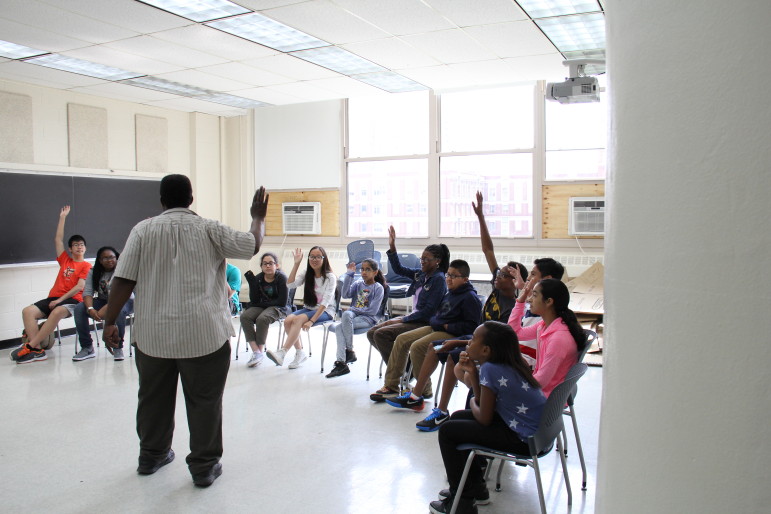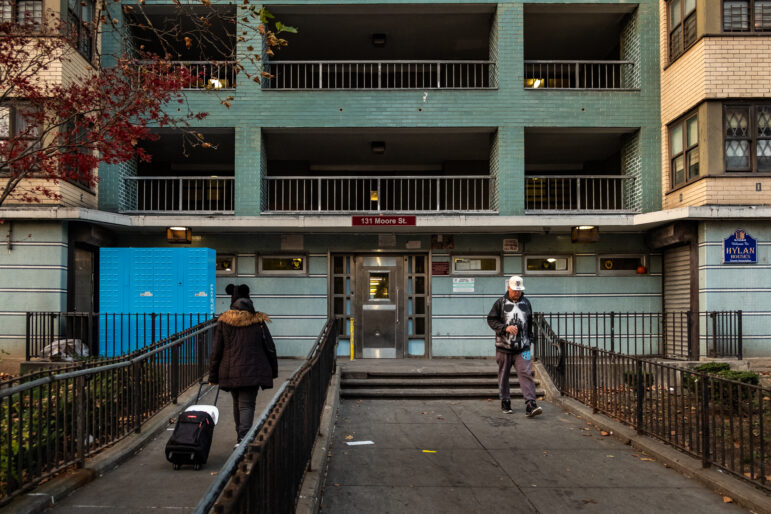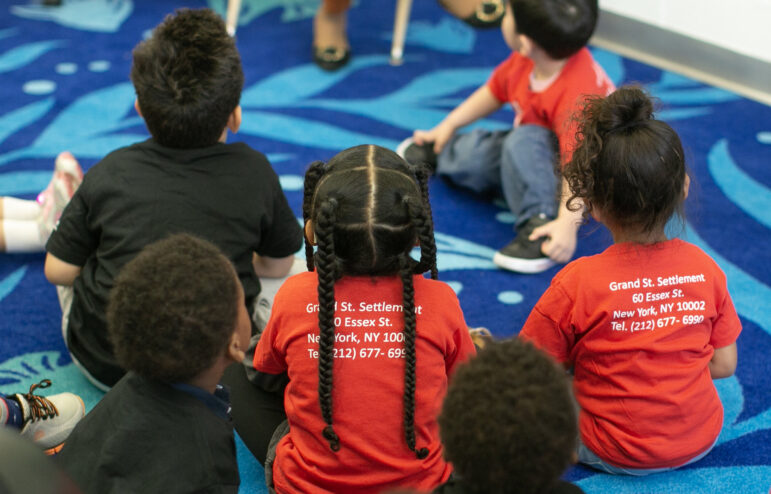
Patrick Donachie
Middle-school students enrolled in the Science of Smart Cities summer program at the NYU Polytechnic School of Engineering participate in a drama workshop run by the Irondale Ensemble Company.
In a classroom in downtown Brooklyn, a group of aspiring student scientists and engineers gathered in a circle, developing a crucial skill in their desired field. In this case, they weren’t reciting mathematical theorems, learning cybersecurity tips or constructing robots. Instead, they were yelping.
“You spend a lot of time being told by adults not to holler, not to be loud, not to be physical. We’re telling you the opposite,” Michael David, the class instructor and a member of the Irondale Ensemble Company, said. “What we’re saying is talk. Yes! YEE-HAW!”
To begin, one student would yell like a unruly cowboy towards the student to their right, and that student would then “pass on” the yelp to the next student in the circle; anyone who didn’t give their all might lose their spot.
The yelping was an exercise in an acting and improvisation session designed by Irondale for middle-school students enrolled in the Science of Smart Cities summer program at the NYU Polytechnic School of Engineering. It’s one of 10 Irondale programs taking place this summer for science, technology, engineering and math (STEM) students throughout the city. Irondale actors and educators say that the presentation skills students cultivate during the course of these sessions will embolden them as they embark on further education and careers in STEM.
According to Ben Esner, the director of the School of Engineering’s Center for K-12 STEM Education, this training works wonders for the STEM students.
“In science, I don’t care if you’re an academic or an innovator.” he said, as the students grew more emboldened with their personalized yee-haws. “The ability to get in front of people and present is incredibly important.”
Amanda Hinkle, Irondale’s director of education, said that the development of students’ presentation skills wasn’t always emphasized in the course of a school-year STEM education.
“A lot of it is self awareness, presenting your best self,” she said. “It’s about being able to authentically say why the STEM material means something to you.”
Irondale’s STEM workshops were born out of a collaboration between the theater company and a robotics class at Fort Greene Preparatory Academy in Brooklyn. In robotics competitions, Fort Greene’s team scored high marks for its academic comprehension but struggled when tasked with publicly presenting its work. The school principal contacted Irondale to work with the robotics students on improving their presentation skills, and the team subsequently won first prize in Research at the 2013 FIRST LEGO League Brooklyn Qualifier.
The classes Irondale offers are considered STEAM programs, a variation on the STEM acronym with an added ‘a’ for the arts. STEAM advocates argue that integrating art and design lessons into STEM education benefits the students’ educational development and career prospects.
Critics worry that while the arts may be a vital discipline in their own right, incorporating them into a STEM education could dilute the core verities of science and engineering that students must understand.
STEAM education, like STEM, has benefitted from increased focus in recent years; U.S. House Representative Suzanne Bonamici (D-Oregon) started a Congressional Caucus on STEAM in 2013. The Rhode Island School of Art and Design (RISD) was at the forefront of championing a national “STEM to STEAM Initiative,” and even Sesame Street made a point of incorporating the arts into its STEM curriculum during its 2012-2013 season.
In addition to the Department of Education’s collaboration with the Polytechnic School of Engineering, the D.O.E. also hosted 60 high school students for a one-day event in July called #STEAMFWD, where the students worked to combine STEM concepts with artistic pursuits. In June, the city hosted the 14th annual Citywide Graphic Arts Competition, incorporating digital illustration for the first time this past year.
Other schools and programs have also worked to integrate STEAM ideas. The Marymount School of New York runs a specialized summer STEAM camp, and the 92nd Street YMCA offers a variety of STEAM opportunities for students, including classes in digital design, LEGO Robotics and coding. The famous performance ensemble Blue Man Group founded the Blue School in 2006 to explore the interaction of the five STEAM disciplines.
“We believe that these ingredients cannot exist outside of their relationship to one another, nor can they exist without a deep and rich understanding of history, literature and the human condition,” Allison Gaines Pell, the head of the school, wrote in a May 2015 article for the Huffington Post.
Challenges remain for city students, who have become increasingly bereft of arts programs due to budget cuts in arts programs. A 2014 report from Comptroller Scott Stringer’s office found “a 47 percent decline in spending to hire arts and cultural organizations to provide educational services for students, and an even steeper decline in spending on arts supplies and equipment.”
As for the conflict between the arts and the sciences, Esner considered it a false choice, saying that integrating arts into STEM could combat some of the more worrying demographic gaps prevalent in STEM education.
“If you want to talk about solving gender and racial imbalances, you’re going to solve the problem when every school has science and engineering programs, and arts and history and social programs,” he said. “These are valuable things to make you a whole person. It’s not art or engineering.”









One thought on “Do Students Need to Learn Art to Succeed at Science?”
This is a wonderful article. Full STEAM ahead!